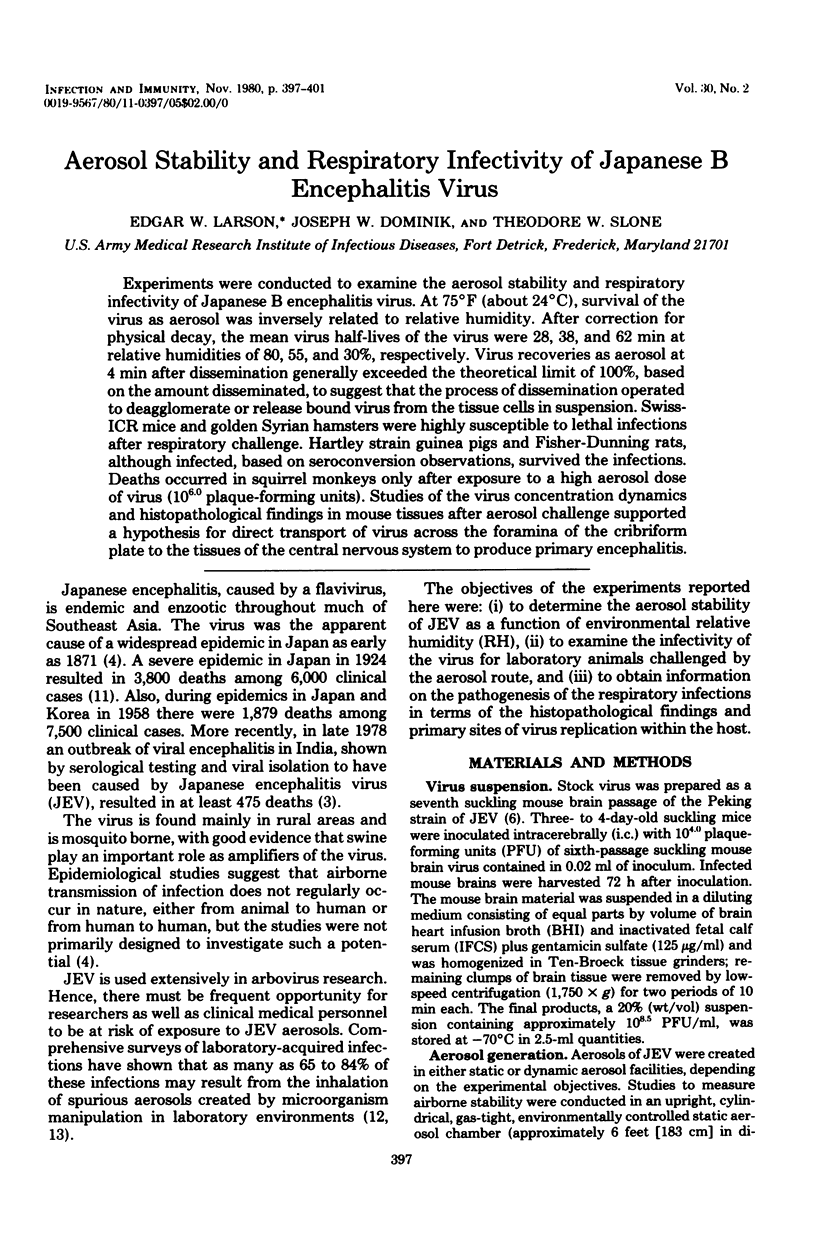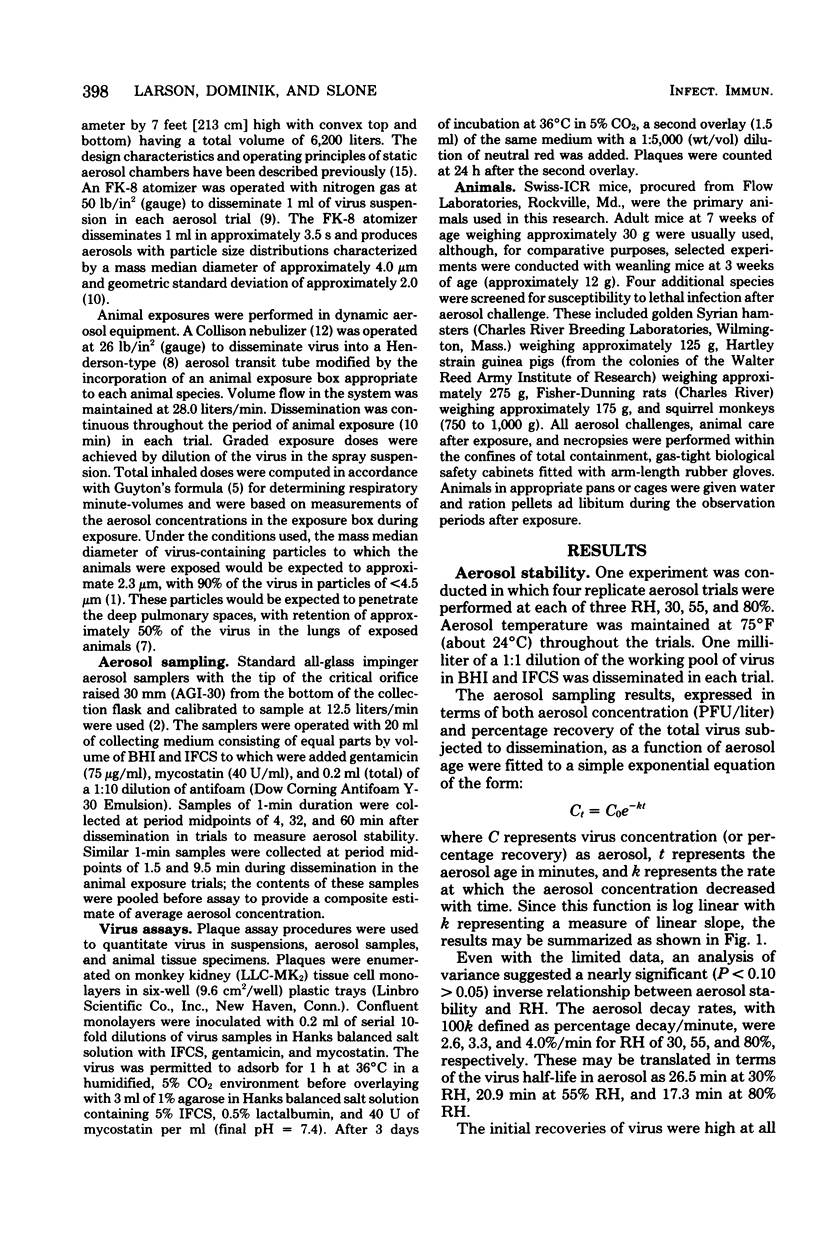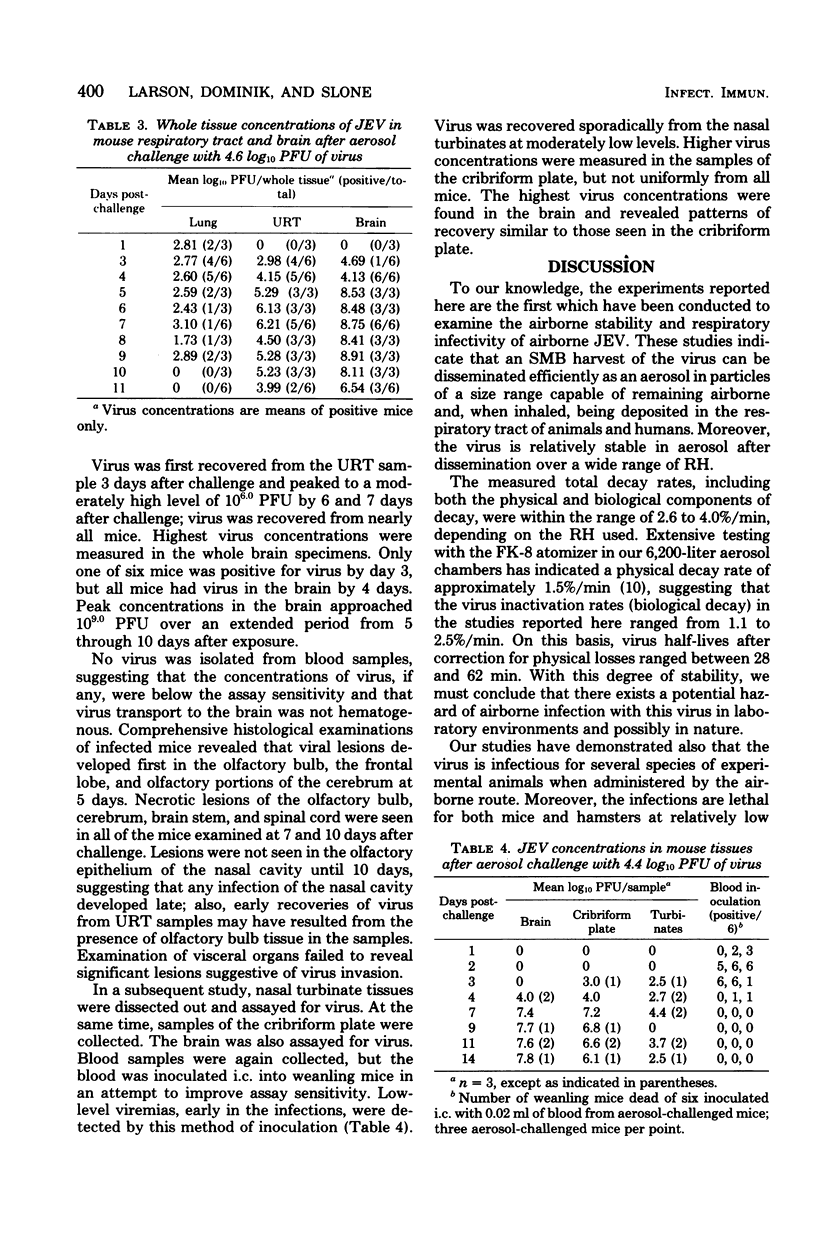Abstract
Experiments were conducted to examine the aerosol stability and respiratory infectivity of Japanese B encephalitis virus. At 75 degrees F (about 24 degrees C), survival of the virus as aerosol was inversely related to relative humidity. After correction for physical decay, the mean virus half-lives of the virus were 28, 38, and 62 min at relative humiditis of 80, 55, and 30%, respectively. Virus recoveries as aerosol at 4 min aftr dissemination generally exceeded the theoretical limit of 100%, based on the amount disseminated, to suggest that the process of dissemination operated to deagglomerate or release bound virus from the tissue cells in suspension. Swiss-ICR mice and golden Syrian hamsters were highly susceptible to lethal infections after respiratory challenge. Hartley strain guinea pigs and Fisher-Dunning rats, although infected, based on seroconversion observations, survived the infections. Deaths occurred in squirrel monkeys only after exposure to a high aerosol dose of virus (10(6.0) plaque-forming units). Studies of the virus concentration dynamics and histopathological findings in mouse tissues after aerosol challenge supported a hypothesis for direct transport of virus across the foramina of the cribriform plate to the tissues of the central nervous system to produce primary encephalitis.
Full text
PDF




Selected References
These references are in PubMed. This may not be the complete list of references from this article.
- Berendt R. F. Simian model for the evaluation of immunity to influenza. Infect Immun. 1974 Jan;9(1):101–105. doi: 10.1128/iai.9.1.101-105.1974. [DOI] [PMC free article] [PubMed] [Google Scholar]
- HENDERSON D. W. An apparatus for the study of airborne infection. J Hyg (Lond) 1952 Mar;50(1):53–68. doi: 10.1017/s0022172400019422. [DOI] [PMC free article] [PubMed] [Google Scholar]
- Harrington D. G., Hilmas D. E., Elwell M. R., Whitmire R. E., Stephen E. L. Intranasal infection of monkeys with Japanese encephalitis virus: clinical response and treatment with a nuclease-resistant derivative of poly (I).poly (C). Am J Trop Med Hyg. 1977 Nov;26(6 Pt 1):1191–1198. doi: 10.4269/ajtmh.1977.26.1191. [DOI] [PubMed] [Google Scholar]
- SULKIN S. E., PIKE R. M. Survey of laboratory-acquired infections. Am J Public Health Nations Health. 1951 Jul;41(7):769–781. doi: 10.2105/ajph.41.7.769. [DOI] [PMC free article] [PubMed] [Google Scholar]
- WEDUM A. G. LABORATORY SAFETY IN RESEARCH WITH INFECTIOUS AEROSOLS. Public Health Rep. 1964 Jul;79:619–633. [PMC free article] [PubMed] [Google Scholar]
- WOLFE E. K., Jr Quantitative characterization of aerosols. Bacteriol Rev. 1961 Sep;25:194–202. doi: 10.1128/br.25.3.194-202.1961. [DOI] [PMC free article] [PubMed] [Google Scholar]


